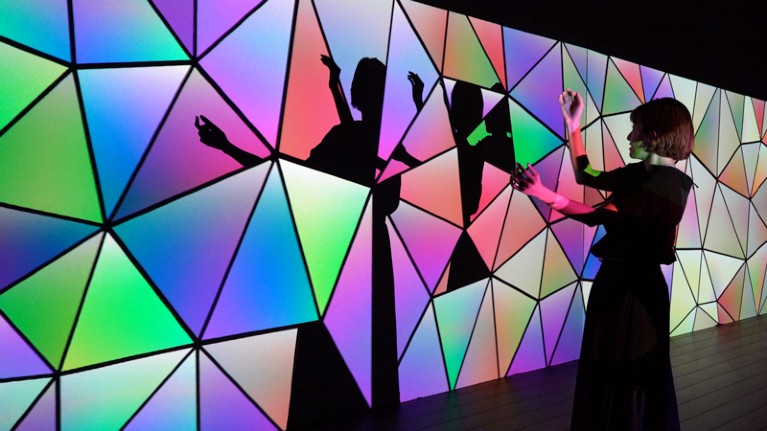
Credit: Adapted from Getty
One morning in 2009, Jacqueline Tabler woke up with the solution to a laboratory problem that had been plaguing her for months. She got out of bed, grabbed her notebook, and started sketching out an experiment that had come to her in a dream.
Tabler, then a developmental-biology PhD student at King’s College London, was struggling to reproduce data using methods from previous work in the lab that had shown the function of an enzyme, called PAR-1, in the development of frog embryos. She had the idea to perform a grafting experiment, taking a layer of cells expressing excess PAR-1 from one embryo and transplanting them onto an embryo that does not express the enzyme. By comparing these grafted embryos with control grafts expressing typical levels of PAR1, Tabler hoped to see what happened to the cells as the embryos created neurons.
“It was a fantastical answer,” she says. “I knew what I had to do was graft from one embryo to another embryo, follow the tissue, and then I would figure it out.”
Tabler, who now leads a group at the Max Planck Institute of Molecular Cell Biology and Genetics in Dresden, Germany, ran the grafting experiment and noticed that there was a higher-than-expected amount of PAR-1-expressing cells in certain layers of the embryos. From this, she and the lab team realized that PAR-1 had a previously unknown function controlling the orientation of cell division. The results were published in 2010 in Development1.
Tabler says that she took a risk approaching her supervisor with the idea for a different experiment when she was meant to be running those that she had been assigned, but now sees how this kind of creative risk-taking can make you a successful lab leader. “I had to learn that what set me apart — my curiosity and creativity — was positive,” she explains. In other words, it “was a feature, not a bug”.
Learning how to be creative while an early-career scientist is important, Tabler says. However, she acknowledges that as a PhD student or postdoc, often working on a predefined project with strict timelines, deliverables and reports, it can be hard to see where the space is for creativity.
A culture problem
Tabler spoke about her experiences of creativity in science at the (In)Credible Research Conference 2024. The two-day event in Berlin last October discussed whether creativity is a valued aspect of scientific work, and how it can be nurtured at the early-career stage.
From the discussions, “the most striking result is the disparity between how important creativity is for science versus how much opportunity and value is given to it within the research environment”, says Ian Erik Stewart, a neuroscientist at the Free University Berlin, and part of the team of early-career researchers who organized the conference. When attendees were polled, the majority regarded creativity as essential for research breakthroughs. But 81% reported encountering barriers in pursuing creative or unconventional ideas owing to a variety of structural issues, including publication, funding and supervisor pressures.
Biomedical scientist Itai Yanai, at the New York University Grossman School of Medicine in New York City, thinks that the scientific culture has sidelined much creativity in favour of getting “the right fellowships and good publications”.
“The system of science is not really rewarding creativity,” says Yanai. “We have this situation, in which to advance your career as a scientist, creativity becomes a liability. It does pay off eventually, but that assumes you can survive in the business long enough.”
But defining creativity is hard. There was agreement at the Berlin conference that creativity in science is the intersection of something that is new and also worthy of pursuit, as theorized by science philosopher Julia Sánchez-Dorado in a 2023 study2.
Shunichi Kasahara, a computer scientist at Sony Computer Science Laboratories in Tokyo and at the Okinawa Institute of Science and Technology in Japan, thinks that creativity in research is “the ability to observe, iterate and extract meaningful insights from experiences”.
Whatever the definition, it’s widely agreed that personal experiences shape creativity. Tabler attributes her creative breakthrough to embracing a non-linear way of approaching problems, and to discussions with a postdoc in her lab at the time who was running a similar experiment. “Creativity, for me, is drawing from my own experience with my environment and my colleagues, as well as using the way my brain processes information,” she says.

Shunichi Kasahara, a computer scientist at Sony Computer Science Laboratories in Tokyo, developed an interactive exhibit called Fragment Shadow, which aims to expand human perception using technology.Credit: Shunichi Kasahara
“The biggest takeaway from the talks, in terms of individual activities that you can undertake to improve or engage your own creativity, is to experience very widely,” says neuroscientist and conference co-organizer Leandre Ravatt at the Charité – Berlin University of Medicine and the German Center for Neurodegenerative Diseases (DZNE) in Berlin. “A lot of early-career researchers feel that they’re often pigeonholing themselves into a specialization,” Ravatt explains, “often focusing really strongly on the literature of their field.”
“What we learnt from the conference is that if you do this, you’re actually blocking out a lot of avenues for creativity. The biggest recommendation was to read from other fields; go to talks from other fields,” she says.
Investing in her science-communication skills — for example, by writing and editing for a student science magazine — has also taught Ravatt “a lot of different ways to look at the same problem”. When communicating your own science, try “to find a new creative angle, and play around with the conceptual models that are in your work”, suggests Stewart. Or keep it simple, and “just go to the beer hour in your institute”, he advises. “Meet people and then try to inspire them about what you’re doing. By doing so, you’ll make everything way more fun for yourself as well,” says Stewart.
Creating space
Time pressures on early-career researchers mean that there is a limit to how much they can do. Ravatt says that if institutions “want to encourage more interdisciplinary or creative thinking, they need to create the spaces for these sorts of transdisciplinary encounter”.
Martin Lercher, a computational cell biologist at Heinrich Heine University in Düsseldorf, Germany, thinks that creativity should be a focus of university curricula. “Implicitly, of course, a lot of people get some training on creativity from interactions with their supervisors during their PhD,” says Lercher. “But it’s just so much more efficient if there is some formal background to that, some theory, some structure,” he says.
Yanai and Lercher think that it is useful to see the creative side of science as distinct from the rest of it, a dichotomy nicknamed night-and-day science. The concept was originally outlined by French biologist and Nobel prizewinner François Jacob3. “Day science is the executive part. You have the idea and to test it, you do controlled experiments,” says Yanai. “Night science is the world of creativity, the world of ideas. In night science we don’t talk about the specifics of the experiment, instead, we use the language of metaphors and anthropomorphisms,” he explains. “We’re advocating to first of all recognize that there’s a night-science world. Once you recognize that, you realize we need training just as much in this world,” Yanai says.
Yanai and Lercher have created a website containing free materials for educators to help them teach the importance of the creative process, with tips and tricks that stimulate creativity. One of Lercher’s favourite questions to ask is, ‘why would the cell do something so crazy?’.


